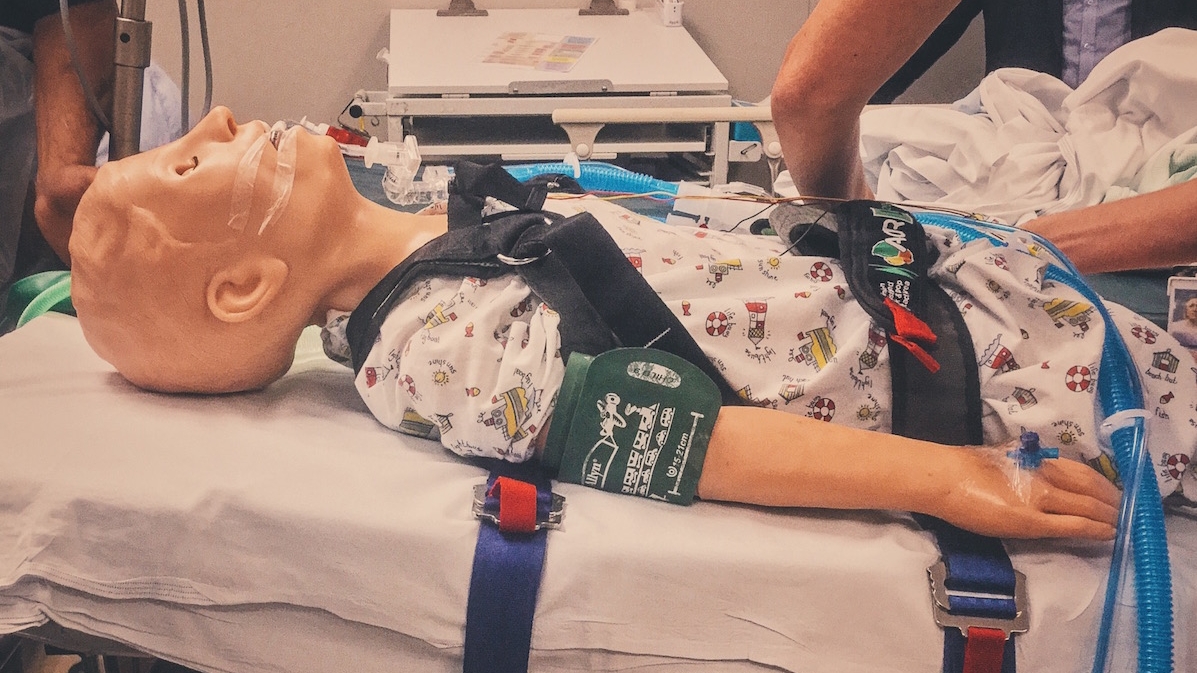#SimBlog: Methadone Ingestion
““An 18-month-old is brought to the ED by a babysitter who is struggling to wake her up...””
Observations
A – Patent
B – Sats 91% in air, RR 20, no recessions
C – HR 92, BP 100/60, CRT < 2 sec
D – BM 5. Responds to voice
E – Temperature 35.8°C
Clinical Findings
Chest clear. Saturations improve to 96% with high flow oxygen.
Pupils constricted bilaterally 1 mm
No evidence of head injury
Gas: Mild respiratory acidosis
Why We Simulated?
Toddlers who have accidentally ingested small objects, medicines or cleaning products are often seen in the paediatric ED. To put this into context, in 2013-14, the National Poisons Information Service received more than 14,000 calls from health professionals asking for advice regarding suspected childhood poisonings.
Although in the majority of cases of medicine ingestion severe side effects and deaths are rare, certain medicines can be particularly dangerous. These include opiates, tricyclic antidepressants, antipsychotics, quinine, calcium channel blockers and oral hypoglycaemic drugs.
An article recently published in the BMJ, shows Methadone causes more toddlers' deaths by unintentional poisoning in England and Wales than any other prescription drug.[1] The researchers analysed national data on childhood poisonings and hospital treatment or admissions to intensive care for unintentional poisoning from 2001 to 2013. During this period, they identified 28 children aged under 4 who had died in England and Wales as a result of unintentional poisoning with a prescribed drug. Methadone was implicated in 57% of cases.
Sometimes, it is difficult to establish which drug the child has ingested, and so knowing the various signs and symptoms of the clinical toxidromes is useful in narrowing down the potential causative agent. In our simulated case, we wanted our team to recognise the features of the opioid toxidrome (reduced respiratory drive, low HR, low BP, a drop in body temperature, reduced level of consciousness and constriction of the pupils) and use the reversal agent Naloxone. Following the acute medical stabilisation of this child, we then discussed the role of child safeguarding and social services teams in their ongoing MDT management.
References & Further Reading:
- Life in the Fast Lane – Two pills can kill
- PEM Geek – One Pill Killers
Learning Points
The features of an opioid toxidrome are reduced respiratory drive, low HR, low BP, a drop in body temperature, reduced level of consciousness and constriction of the pupils.
Accidental ingestion of substances is common in children. Use Toxbase guidance and consider the possibility of a mixed ingestion.
Naloxone is the reversal agent for opioid overdose. The recommended initial dose in children is 100 microgram/kg IV (max dose 2 mg.)
Positive Feedback
Calm systematic approach to the case enabled thorough consideration of differentials as well as further information gathering in the history.
Non judgemental approach meant babysitter more willing to elaborate regarding drug use.
Ensured child received acute medical treatment required before exploring safeguarding aspects in further detail.








